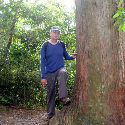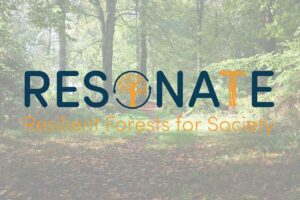
Building Resilience in Scotland’s Urban Tree Populations
Dr Andy Moffat MICFor, now a private consultant at A J Moffat & Associates, reports on a small research project carried out for Forest Research and ClimateXChange.
How well prepared are Scottish tree and parks departments for the impact that climate change will make on their cities’ trees? This was the central question in a research project which sought to understand how tree officers were facing the challenges of climate change, what were the constraints to building resilience and what commercial opportunities were being taken up. Forest Research were also interested in this area from the perspective of identifying relevant research that could make a difference on the ground.
Six out of the seven cities in Scotland were studied (sorry, Perth!) by means of literature review and structured interviews with city staff – in total, ten officers with responsibility for city trees gave ‘evidence’. In Scotland, recent national climate change adaptation and planning policies make specific reference to the role of street trees and their support for “helping Scotland to mitigate and adapt to climate change” and refer to specific ecosystem services such as cooling, flood alleviation and recreation. Many of the cities studied have tree or woodland strategies, policy statements or action plans that also refer to climate change. And all city officers interviewed were well aware of the likely impact that climate change will bring. Nevertheless, progress towards building a more resilient tree population in Scottish cities seems to be slower than desirable for several, understandable reasons.
City tree populations are still heavily influenced by Victorian plantings, and so many trees are at or towards the end of their lives. This presents considerable pressure on resources which are directed to ensuring trees are safe. Coupled with the fact that budgets for parks and street trees are in overall decline, this means there has been only limited opportunity to focus on adaptation to changing climates. Instead, the threat of damaging pests and pathogens has demanded attention, given that these have grown in importance in recent years.
Nevertheless, building resilience against biological vectors can also help against damaging climates. Cities are already diversifying their species where possible, and are not afraid to use non-native species in the city, whilst accepting that native species remain important components of urban woodlands. They are also taking opportunities for new planting, notably around city boundaries. Many cities are using arboricultural arisings to generate renewable energy and using some of the revenue to augment their budgets for tree management. One has already registered a project under the Woodland Carbon Code.
Perhaps the biggest obstacle to progress in building resilience is social or human. Scottish city inhabitants are apparently somewhat ambivalent to their trees, a few willing to give time voluntarily to support them, others rather hostile and many taking them for granted. The attitude of city council senior management seems to reflect this, despite a growing appreciation of the wide range of ecosystem services that are increasingly identified for city trees. There remains a pressing need for those involved in urban forestry and arboriculture to articulate the need for stronger support for urban trees. Study interviewees were enthusiastic that i-Tree could be an effective form of communication to make the case for trees, and welcomed its further development.
Andy Moffat MICFor
A J Moffat & Associates (www.ajmoffat.co.uk)
To read the report on this project in full, please click here.





